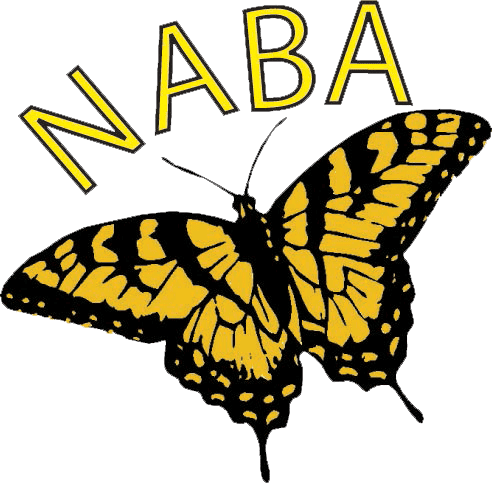![]()
The following article originally appeared in Butterfly Gardener, a NABA publication for members. It originally appeared in Vol 15: No.1, Spring 2010. NABA member Lenora Larson has graciously allowed us to reprint it here.
Host Plant: Partridge Pea
By Lenora Larson
We have consensus: members of the Leguminosae (Pea) family are delicious. Humans relish peas and beans. Horses and hairstreak caterpillars happily consume alfalfa. Rabbits so adore white clover that it can be grown as a distracting protector for the rest of your garden plants. Even bacteria munch on the Leguminosae roots and fix nitrogen back into the soil. And the caterpillars of four species of butterflies feast on the leaves of the genus Cassia: Orange Sulphurs, Cloudless Sulphurs, Gray Hairstreaks, and Little Yellows.
 Butterfly Gardener magazine has already talked about Cassia marilandica, the delightful native perennial, whose pinnately compound leaves are appreciated by Orange and Cloudless Sulphur caterpillars. (Volume 10, 2005). This “Wild Senna” blooms with long racemes of brilliant yellow flowers that are visited by an orchestra of pollinators. The attractive blue-green foliage on multi-stemmed five foot plants grants this beauty a permanent spot at the back of the flower bed. It dies to the ground in winter and reappears in late spring, accompanied by many seedlings if the gardener has not carefully collected all of the seed pods the previous fall.
Butterfly Gardener magazine has already talked about Cassia marilandica, the delightful native perennial, whose pinnately compound leaves are appreciated by Orange and Cloudless Sulphur caterpillars. (Volume 10, 2005). This “Wild Senna” blooms with long racemes of brilliant yellow flowers that are visited by an orchestra of pollinators. The attractive blue-green foliage on multi-stemmed five foot plants grants this beauty a permanent spot at the back of the flower bed. It dies to the ground in winter and reappears in late spring, accompanied by many seedlings if the gardener has not carefully collected all of the seed pods the previous fall.
This time we’ll focus on another Cassia that is native to the Eastern United States (Florida west to Texas and north to Massachusetts). Partridge Pea, Cassia fasciculata (also known as Chamaecrista fasciculata) is a sun-loving annual that grows in poor sandy or gravely soil. From July through September, the flowers create a yellow blanket across rural roadsides. The other common name, “Sleeping Pea” refers to the leaves, which fold shut at night. The blue-green pinnate leaves are “sensitive” and also immediately close up when touched.
The showy one inch diameter flowers are bright yellow with a red blotch at the base and dark red anthers. They grow in the leaf axils all along the 2 foot sprawling stem and provide sweet nectar for appreciative bees and butterflies. The amateur botanist may doubt that this large blossom is in the pea family as it lacks the familiar keel of other Leguminosea flowers and resembles a small Camilla. Fall brings reassurance with the growth of long thin pea pods filled with miniature black lima beans. These beans are poisonous to livestock if consumed in large quantities, but birds relish them, hence the name, Partridge Pea.

The seeds are best sown in mid-fall; plants emerge the next spring. Once established, you’ll never have to plant again because it enthusiastically self-sows. Like other plants with taproots, it resists transplanting, but this same taproot confers drought-tolerance. Seed sources can be found on the Internet by Googling the botanical name. If Partridge Pea grows in your region, make a note of the yellow flowers’ location along the highway and return in October to collect the pea pods. However, be sure to first check your state’s regulations on roadside flowers before gathering.
Partridge Pea is a winner with two months of stunning yellow flowers that provide nectar for many pollinators while the various sulfur caterpillars feast on the feathery leaves. Even the most fastidious gardener can welcome this beautiful native plant to the front of the flower bed.
